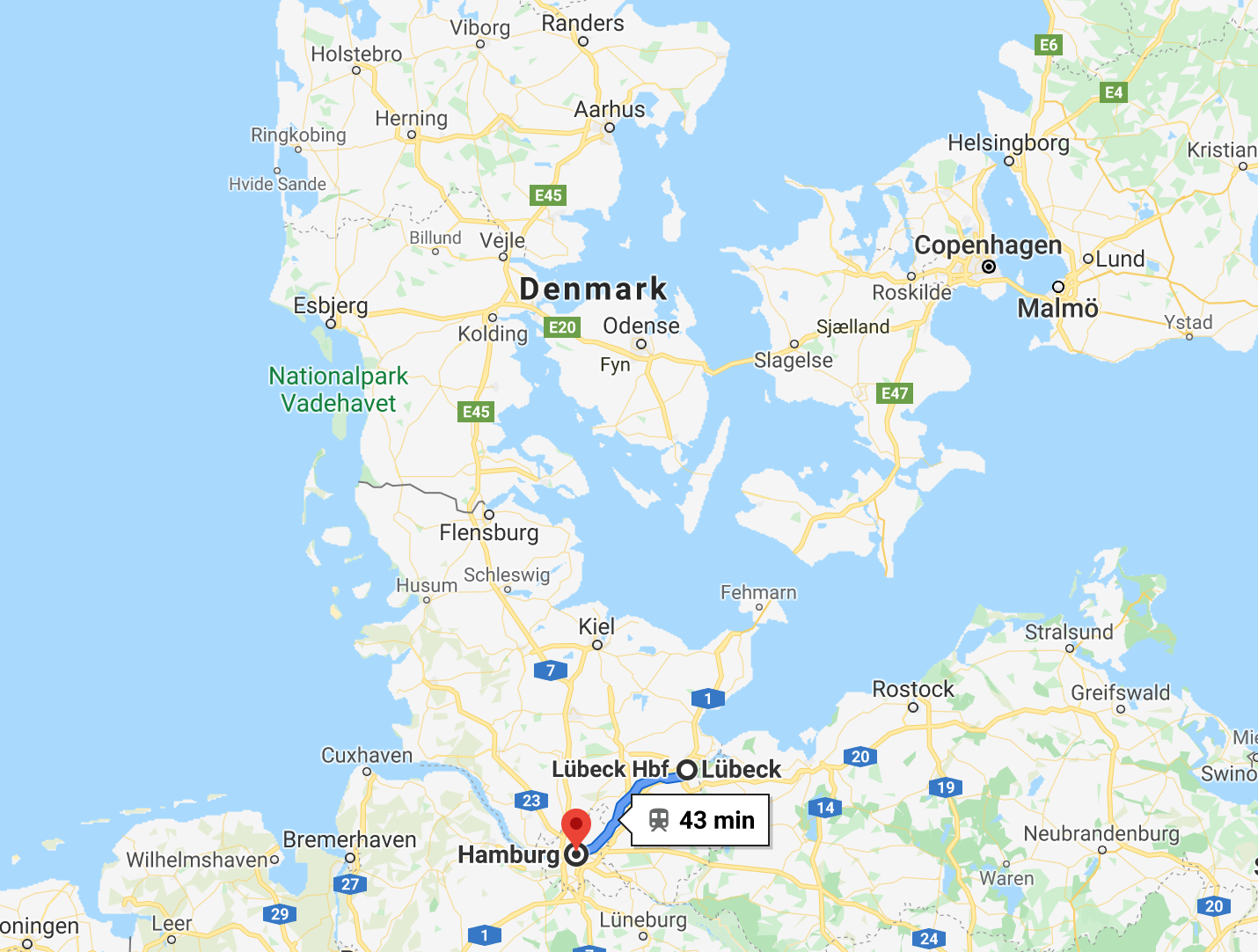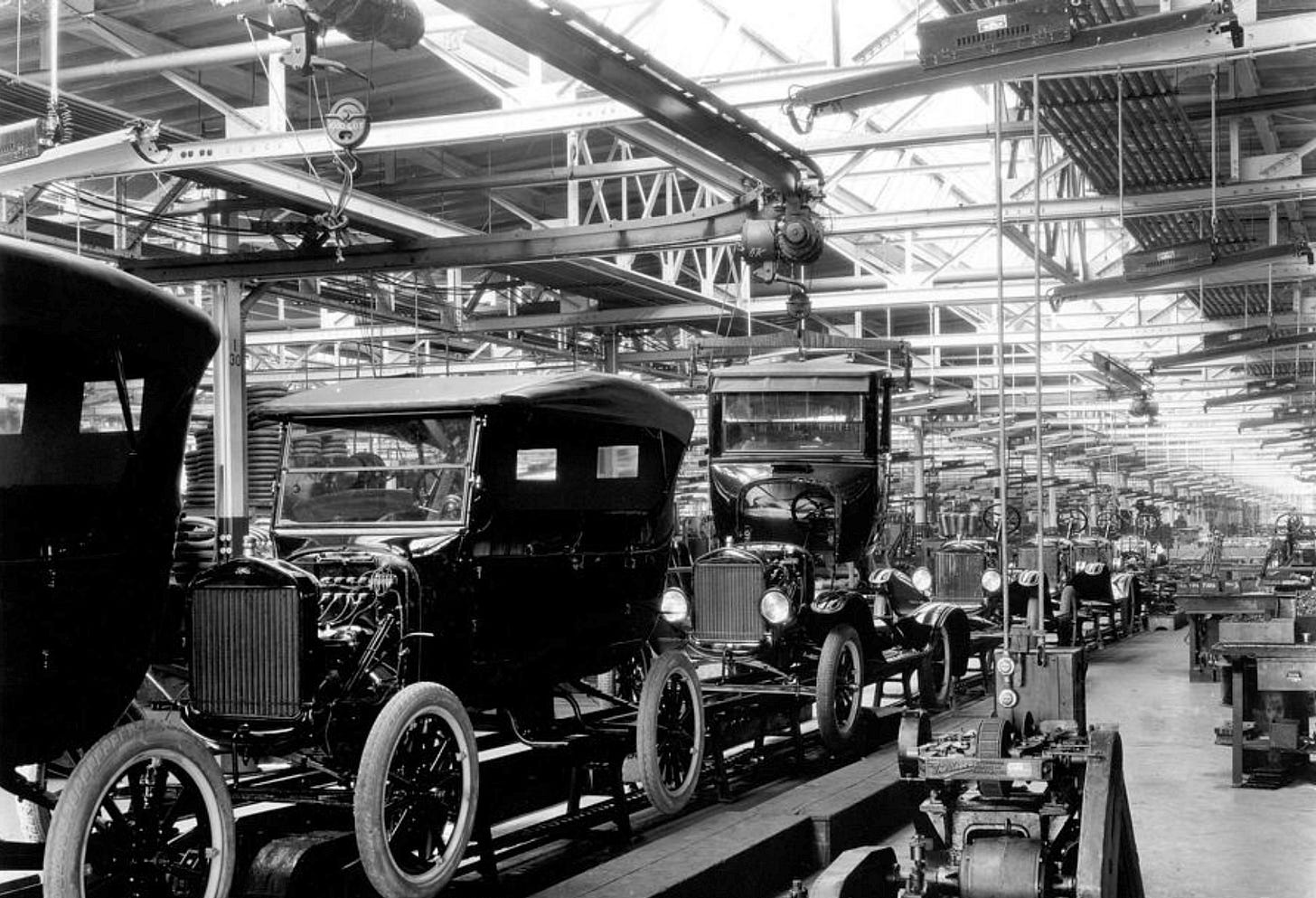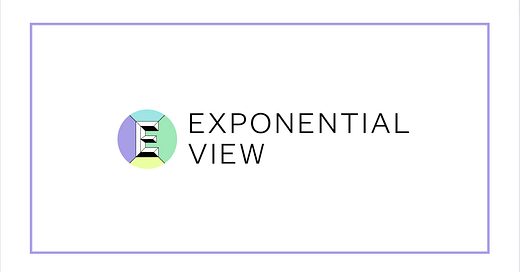💡 Six scenarios for the post-pandemic world
David Galbraith on social interactions, VC, trade, real estate, (geo)politics
Hi, it’s Azeem. This is the second part of a two-part essay written by EV member David Galbraith.
In the first part, David explored why the pandemic will accelerate changes that were already under way. Here, he will present how he sees the six segments of our world changing in the aftermath of the pandemic.
If you enjoy Davi’d special, share this on Twitter, or through other channels.
The Post-Coronavirus Scenarios Based on Flow Changes
Social interactions and communications scenarios
Most changes to social behavior over the last decade can be viewed through the lens of the counterreaction to increased virtual connectivity via the Internet and physical connectivity from globalization. On the virtual side, the original utopian vision of the Internet gave way to security attacks such as Stuxnet, a cyber weapon thought to have been responsible for the damage to Iran’s nuclear weapons program which was subsequently found to have infected many industrial control systems. We also saw state-sponsored hacking and corporate data analytics firms manipulate online opinion and influence elections. Just as information flows changed through the invention of the printing press, provoked negative social consequences (increased anti-semitism, for example) until settling into the new configurations, we are seeing changed information flows as a result of the Internet propagate lies and conspiracies more easily.
Network models show that this is inevitable, at least until information flows settle into small world configurations where ideas need to transmit repeatedly to propagate. This is an example of how systems need to be tuned between signal and noise, as an information network with more friction or noise (Claude Shannon proved, repeat transmission overcomes noise) helps project the truth. The consequence of all this pre-Coronavirus was that the debate over privacy vs. openness trended towards privacy, as people became more concerned that networks were full of bad actors and inaccurate information.
Paradoxically, as we now see the downsides of a physically-connected world, the success in controlling the pandemic, so far, in autocratic Eastern countries with more state control and the inevitable encroachment on personal ‘freedom’, as group outcomes overcome individual ones, means that personal data privacy may no longer be an option.
In terms of the types of online vs. offline interaction preferences, if social distancing measures become a semi-permanent feature, then we will see a barbell effect. The online experience will become more real-time and less asynchronous. We are seeing this with the growth of real-time streaming services such as House Party, collaborative gaming or real-time streaming outpacing social networks, and streamed libraries such as Netflix. That being said, while Zoom (real-time) has grown to have a value that exceeds all major US airlines, Netflix (asynchronous) is now worth more than Exxon Mobil. So there is plenty of value in both.
For offline, in-person experiences may increasingly become premium ones where, for example, as both employees and employers become more comfortable with working from home, there will be little value in working in a cubicle in an office, versus using it for in-person meetings.
Trade and organizational model scenarios
Based on the assumption that changes already underway were equivalent to the shift from agrarian to industrial, and not just a different phase of the Industrial Revolution, the previous shift resulted in fundamentally new types of trading entities and marketplaces, as medieval trade fairs and guilds were replaced by modern-day capital markets and joint stock corporations, respectively.
That these were a result of the twin changes to capital flows from the discovery of the New World and changes to information flows from the invention of the printing press are backed up by the fact that trading cities that were both close to Mainz, where printing presses were first located and connected to the Atlantic, replaced guilds with corporations earlier. Lübeck and Hamburg are only 30 miles apart, but Hamburg with its Atlantic trade replaced guilds, whereas Lübeck, which sat on the Baltic, did not. Similarly, Seville which is connected as an inland port to the Atlantic, was further away from Mainz, and so did not replace its guilds early.

If similar changes to information and trade flows today result in new types of organizations replacing current corporations and capital markets, then it’s likely that they will be structures more adapted to networks. One feature of this is that people will belong to multiple organizations and entities over time and at any one time, with the equivalent of equity in each, and possibly drawing annuity streams from them either as a worker or a member, sharing data. As the pandemic has shown, these organizations and business ecosystems will also have to be able to be resilient to the counter-reactions to networks, such as misinformation and bad actors in information networks and disruption caused by deliberate political actions, and disease in physical ones. These will require new systems of governance and supply chain insurance, respectively.
Infrastructure and real estate scenarios
Before the pandemic hit, there was a secular decline in retail space demand already underway. This will clearly be accelerated as numbers of smaller retailers and restaurants reduce, and e-commerce and delivery services increase. Work from home will reveal a lesser need for office space, so both retail and commercial property prices will decline in Europe and the US. For residential, the story is more complicated and while we don’t know the outcome, we know some of the parameters that will be at play: on the one hand, as interest rates are kept low and the memory of 2008 is intact, a short-term decline could be viewed to trend upwards; but if inflation does kick in and interest rates eventually increase, then there could be a major decline. Sudden switching from Airbnb to rental inventory in major cities may have an impact on rents (as looks likely in London and Dublin where it has increased supply) but this is unlikely to create a systemic risk to residential property prices. Over time it’s likely that stimulus will have to flow onto smaller balance sheets and it won’t cause long-term asset inflation as it did post-2008, in which case there could be a major correction in over-inflated assets. More broadly, there may be a narrowing of the price spread between attractive, rural residential property not normally commutable (say, two hours) outside major cities, as people work from home part of the time and cities gain notoriety as places of periodic disease outbreaks.
For infrastructure and mobility, the trend pre-pandemic was the smarter infrastructure (e.g. dockless vs. docked bike-share) with a focus on reduction of cars in cities, with electric and self-drive vehicles being the dominant story.
Post-pandemic there are several potential infrastructure implications if we see effects become long-term. The first is that overcrowded public transport will become much less desirable and we may see a big increase in cars in the cities, largely through ride-hailing services, as changes to public transport would take decades. We may also see a convergence of the self-drive and ride-share model with public transport to one where much smaller vehicles carry a few people, point-to-point rather than trains or large buses and trams.
As the friction of air travel is likely to increase even more than post 911, there is an opportunity to look at alternatives. Dedicated high-speed self-drive lanes between cities, such as those that were trialed outside Beijing, allow for faster point-to-point travel than short-haul flights, for a fraction of the infrastructure cost of high-speed rail and using shortly available (Level 4) autonomous vehicle technology rather than fully autonomous, Level 5, which looks like it may be a long way off.
For services infrastructure, a major trend in things such as healthcare may be decentralization, where putting vulnerable, sick people all together in one hospital, riddled with antibiotic-resistant bacteria may be a bad idea. Mixing patients with severe intensive care needs with people with elective procedures may also lead to a separation into different providers and a whole swathe of visits to general practitioners can be replaced by online telemedicine services.
Investment model scenarios
Venture capital is a small sector of private equity which, in turn, is a small sector of other investment types. It is a tiny asset class where returns are often not spectacular, but nonetheless has proven to create many of the world’s biggest companies. It is a relatively new and potentially efficient way to channel stimulus into innovation as part of a new ‘New Deal’, post-Coronavirus. This would in some ways be a continuation of a trend where sovereign wealth fund commitments to VC have doubled yearly, with more than 70% now directly participating in venture deals.
But there is an issue. While VC aligned incentives between investors and entrepreneurs by sharing upsides from uncapped returns from equity rather than debt, it only works for companies that have some sort of exit via acquisition or public listing. Many of the companies that are now most in trouble are small businesses, such as high-quality artisanal producers that can nevertheless become large brands (private equity investment in the artisanal beer company, Brewdog was at a valuation of more than $1b) that cannot take risks to innovate or scale based on bank loans that are looking for reliable returns and similarly are often not looking to or are not likely to exit. To invest in these sustainable businesses would possibly require innovation on the VC model to allow returns as a variable percentage of future revenue above a threshold (a variable dividend), rather than looking for exits.
Political and economic scenarios
The traditional Right and Left are largely obsolete relics of the industrial era, based on representation of the interests of capital vs. labour and a social pact based on collective bargaining by workers. The American middle class was built not on collective bargaining, but on a template exemplified by Ford: one of aligned incentives between workers and producers who could only find a large number of consumers that mass-produced products needed by paying their workers enough.

Today, zero marginal costs of production of things like software, and saturated attention created by ubiquitous smartphones and Internet access have completely shifted economic fundamentals from being supply to demand constrained for the first time in history. Since low-marginal cost, digital-era, products favor even greater mass production than industrial era ones, and are all competing for scarce attention of users, this should in theory, tip the scales in favor of workers. The problem, however, is that even in the absence of globalization and low-cost workers, higher levels of automation through smart tools and robotics mean that those that own the workforce also own the means of production, potentially leaving the masses with no work and nothing to leverage but themselves and data about themselves. The idea of personal data being valuable has become more acute as people have realised that if a service is free then ‘you are the product’, as with many advertising-driven business models such as Facebook and Google’s that rely on aggregating personal data. It’s likely that some of the leverage for a future social pact may come from jobs that require social proximity such as the carers and delivery workers that have suddenly become much more valuable and critical, during the pandemic lockdown period and that their wages may increase.
Economically, while inflation has arguably been there all along (we just haven’t been measuring it correctly) we will likely see a return of inflation, or rather, stagflation, and a shift away from monetarist policies to fiscal ones. There will be nationalisations and de facto partial nationalizations through bailouts and the role of the state will expand and taxes will increase, possibly creating a period that looks much more like the 1970s, in both Europe and the US.
As other people’s health is transparently an issue of your own health, healthcare ceases to be a zero-sum game and the libertarian model crumbles. In its place, the alternative to an industrial style hierarchical state, is one that is much more fractal and decentralized and tries to preserve a balance of large and small, and public and private entities to allow for rewarding innovation and industriousness while protecting the disadvantaged and unfortunate. In other words, a moderate, centrist political system based on tuned, balanced systems.
Geopolitical scenarios
For most of history, GDP was a function of population, and for eighteen of the last twenty centuries, China and India constituted most of the world’s wealth output. It was the Industrial Revolution and the use of machines to leverage output, independent of population, that allowed Europe and then the US to become dominant.
China’s economic re-emergence suggests that it’s possible that Western hegemony was merely a blip and that the global center of gravity geopolitically will shift East again. Meanwhile, the effects of globalization and digital communication have caused that large, globally-connected cities in the West, such as London or New York, were less reliant on their hinterland within the same country which had become rust belts of post-industrial era decline. This created a further shift away from the traditional Left and Right, to identity based on resurgent nationalism outside of the cities and more diverse identities based on sub-traits, within. It also led to the idea that there would be a return to the city-state. The potential resurgence of city-states diminishes as a result of the pandemic, unless they have true sovereign status such as Singapore.
The effects of the pandemic will likely cement the counter-reaction against globalization, as there is inevitably more friction between borders and as the role of the state naturally increases through de facto nationalisation, stimulus and health provision; Left will have to move to a larger model of unified as well as diverse identity to prevent the sweep of right-wing nationalism, all while the Right will have to adopt big state social measures such as universal health care in the US, just as it did in the 1930s, post Great Depression.
Let me know your thoughts in the comments below.
David Galbraith, @daveg
Disclosure: Azeem is an investor in fund run by Anthemis Group, where David Galbraith works, although it does not represent a material portion of his assets.



An excellent and informative essay. I am fascinated by the changes the pandemic could create or accelerate so am glad Azeem has given the subject so much time. If any EV readers have any good resources related I'd love to hear what they are.
I believe in the core point that it will accelerate a lot of positive change but also feel worried by the possibility of right wing nationalism rising from it. Hopefully this threat will be tempered by the need for socialist policies that will pull some right wing governments towards the centre and the greater sense of community that, for now at least, has developed in many countries.
Thanks a lot for the essay! Really enjoyed the forecasting effort. Btw the post created quite a conversation in my twitter feed. Cheers to that!
Below the four scenarios of the Zukunftinstitut (Future Institute) in Frankfurt. Translation by me. Some parts are my interpretation and additions (especially in point 4). Please be mindful of this fact 🙂
1. Total Isolation: Shutdown became the new normal. (Public) transport and borders are heavily monitored and regulated. Trade deals are done for primary care only. We adapt to the status quo and forget.
2. System Crash: Recession became a depression. Focus on national interests has massively diminished global cooperation. The fear of a new outbreak forces leaders to solely take myopic decisions. Borders closed. We fight for toilet paper and medical equipment. International Solidarity is at an all time low. We live in nervous times.
3. Neo-Tribes: The world lives in local structures. We focus on local production. Family is the new (old) center. Small communities are newly developed and solidify in a back-to-the roots us vs. them culture. Sustainability and us-culture are values lived locally not globally. We don’t contemplate avocado in poke bowls but self-grown potatoes of Tim the tribe member down the road.
4. Adaption: Learning. Come back stronger. We adapt to new situations and are flexible with change. The world economy grows, but slower. Some parts stagnate. Companies detach from growth and develop adaptable business models. There’s a way of letting dinosaurs die in peace. Nobody minds. We move on. New KPIs replace the abstract idea of GDP growth. We include cost for ethics in our balance sheets due to believe in long term, resilient business agreements. Smart contracts ensure trust. Money can’t be arbitrarily inflated. Humans own their data. Influencer value and stress respect. Kids and teens idolise mindful superstars, who achieve success in contemporary disciplines due to higher focus and awareness. Bridge builders are favoured over candy-rush activists. The Dirk Nowitzki Space Elevator is the biggest symbol of values of the enlightenment materialised in a global tourist attraction: “Don’t do harm” is the new yolo.
Dream big 🙂 or go home!
Big shout out to all the care workers and critical service employees. Also respect to the community members who kept and keep us informed of the situation in others countries. In Germany, especially in Munich, hospitals have luckily stood resilient to the chaos. People (even intellectuals) are getting cooky about the status quo: "Nothing was ever as bad as the media and the politicians said it was. The hospitals aren't even that full!" I'm happy for every reasonable thought and opinion. Especially in this community. Thanks for making my corona time a way more informed time as I could have ever hoped for! Enough with the cake :-) let's eat the cherries and get back to work again, in the new way.
Source: https://www.zukunftsinstitut.de/artikel/der-corona-effekt-4-zukunftsszenarien/